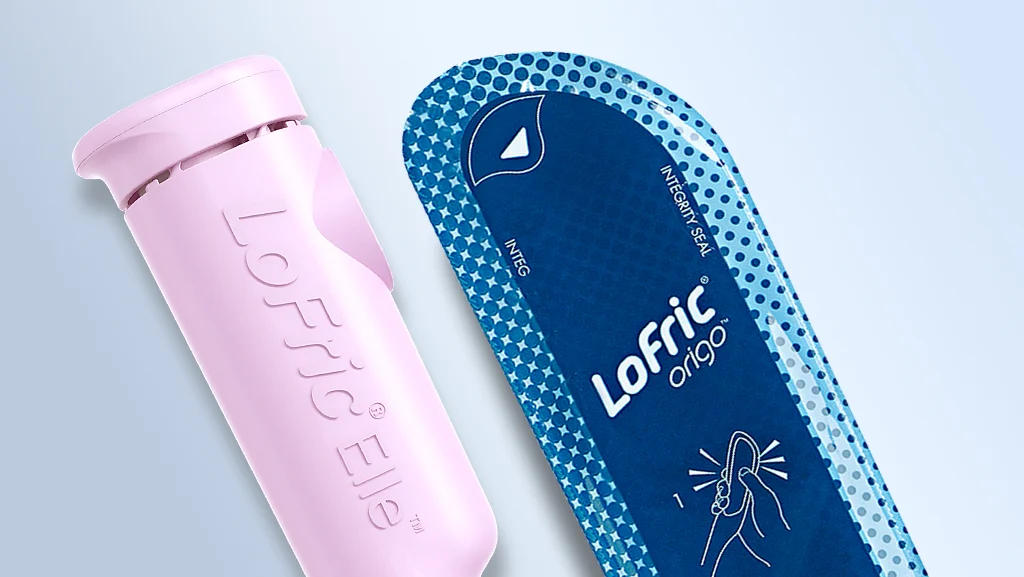
In this blog, we will cover what urinary catheters are, why you would need to use them, and how they work. We’ll also look at some of the specific considerations for using catheters for both men and women.
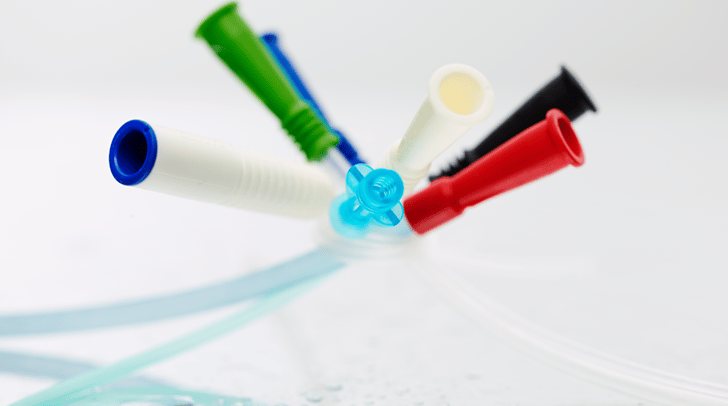
What is a urinary catheter?
Although there are different catheter types, the common purpose of all urinary catheters is to allow the user to drain urine from the bladder. Most urinary catheters are inserted via the urethra to expel urine, mimicking how we naturally urinate.
The catheter consists of a thin flexible tube with eyelets to allow liquid to flow through the catheter. Some catheters will be pre-coated with a special surface to permit smooth insertion and removal, while others will require a lubricant to be applied before inserting the catheter. In addition, some catheters have a built-in bag to collect the expelled urine.
There are several reasons that someone may need to use a urinary catheter, some of which are only temporary while others may require long-term catheterization.
Common Bladder Problems
To understand why someone would need to use a urinary catheter, we will take a closer look at some common bladder problems.
Urinary Retention
Urinary retention is the inability to completely empty the urine in the bladder. This can also be referred to as having residual urine. Urinary retention is more common in men than it is in women and becomes more common as you grow older.[i]
With retention, you may feel that you need to urinate but have little success or may still feel the need to go after you have urinated. Despite not being able to urinate, you may still experience occasional leaking of urine due to having an overfull bladder.
Urinary retention if left untreated can result in bladder damage or chronic kidney failure.
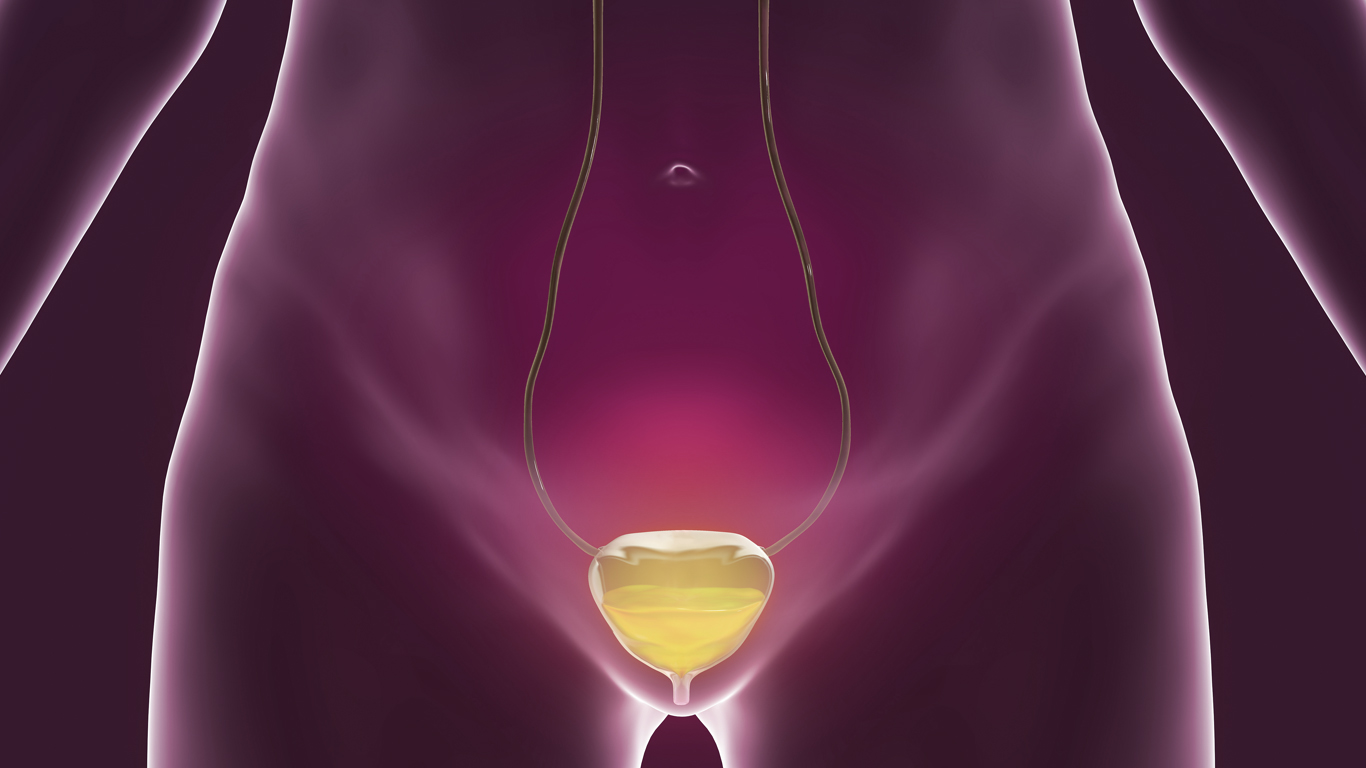
Urinary Incontinence
With urinary incontinence, people experience the opposite issue from retention in that they involuntarily pass urine. It’s a condition that is extremely common and is known to affect millions of people.[ii] Despite being a common problem many people avoid seeking help due to embarrassment which can lead to the condition going untreated.
The severity of urinary incontinence can vary. Some people experience the occasional leaking of urine when they cough or sneeze. More severe incontinence may result in a strong and sudden urge to urinate before even getting to the toilet.
In addition to these common bladder problems, surgical interventions and drug therapies can lead to someone needing to use a catheter in either the long or short term.
Catheter Types
There are several types of urinary catheters, some of which are used mainly in the hospital setting whilst others allow the user to self-catheterize when and where they require. Intermittent catheters are always prescribed by a healthcare professional, who will make sure you get the best catheters for your medical and lifestyle needs. A healthcare professional will also help you get started with catheterization, by providing training and guidance.
Indwelling Catheters
An indwelling catheter is intended to stay in the body for longer periods of time. They are used both in and outside of the hospital setting but need to be inserted by a healthcare professional. For longer-term use an indwelling catheter will need to be changed, at least, every three months.[iii]
Typically, indwelling catheters are held in place by a water-filled balloon inside the bladder to prevent it from falling out.
Suprapubic Catheters
A suprapubic catheter, like an indwelling catheter, is left in place over longer periods of time. However, instead of being inserted into the urethra, it is instead inserted via a hole created in the abdomen leading straight into the bladder. This procedure will be done under anesthetic.
Suprapubic catheters are normally used when damage or a blockage in the urethra makes it difficult to use a normal indwelling catheter or when someone is unable to use an intermittent catheter.[iii]
Intermittent Catheters
Intermittent catheters are single-use catheters that are intended to be inserted to drain the bladder and then removed afterward. Intermittent catheterization is widely considered to be the gold standard for urine drainage.[v]
Most intermittent catheter users will be taught to catheterize themselves. The procedure is simple enough to be performed by most people, including children as young as seven or eight (although some children will need to catheterize much earlier).
With intermittent catheterization, bladder drainage follows a similar routine to how you would naturally urinate with long-term users typically using a urinary catheter 4-6 times a day.
As intermittent catheters are the most used type of catheter, the rest of this article will focus specifically on their usage.
Request free samples of LoFric catheters by clicking here
Understanding Catheter Sizes, Tips and Coatings
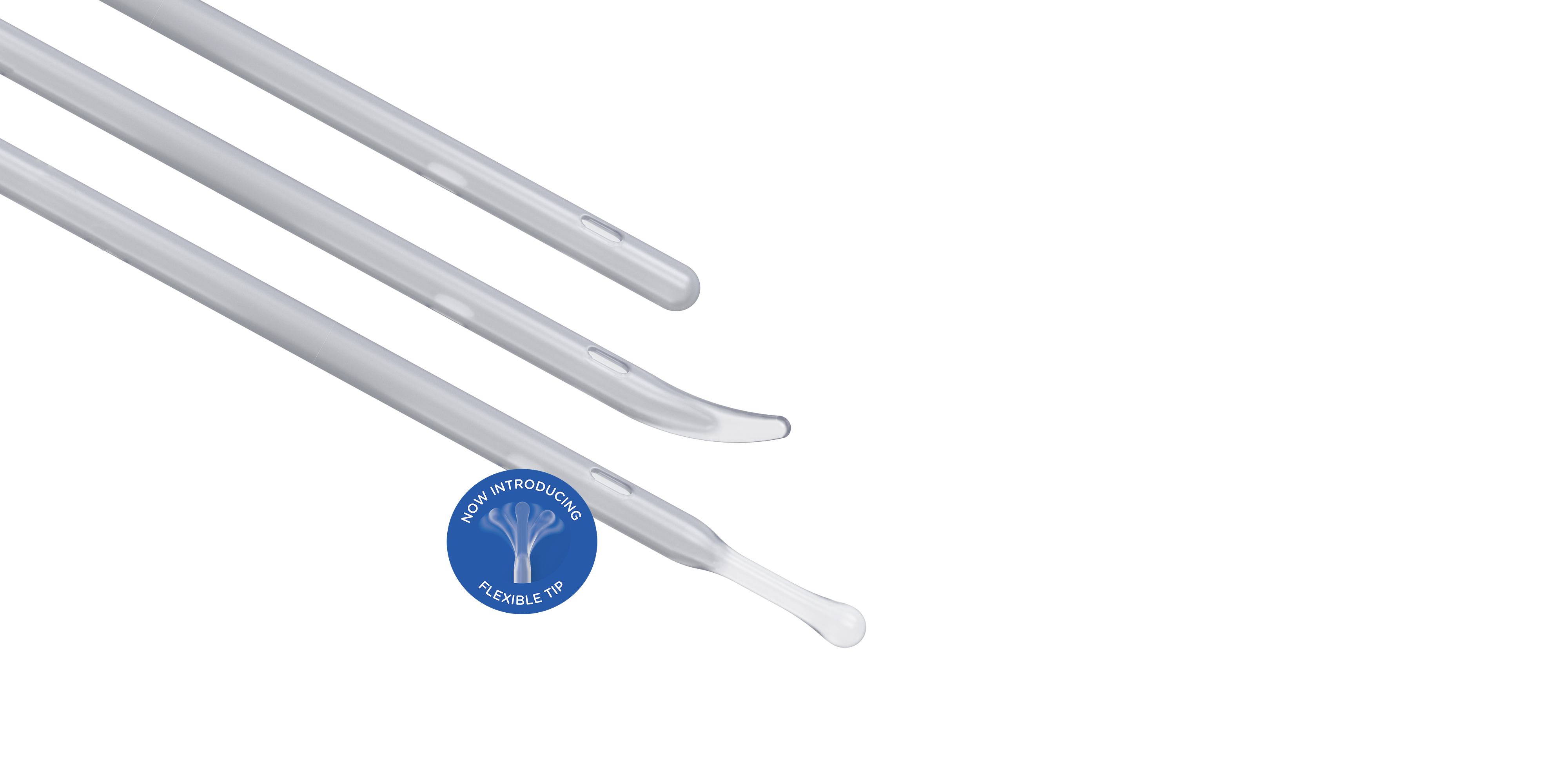
Intermittent catheters come in a range of shapes and sizes that can be a little confusing if you are a new user. The good news is that because intermittent catheters are available on prescription from the NHS, a healthcare professional will make sure you get the right catheter for your needs. This will include helping you to find the right size, length, and tip type.
Catheter Length
Catheter lengths vary depending on both age and gender, ultimately reflecting the length of the user’s urethra, allowing the user to fully empty their bladder.
The standard length for a male catheter is 40cm (16 inches), although there are also longer catheters available.
Female catheter sizes vary slightly more, as many women find that a shorter catheter is easier to insert and use, with catheters available from 15-30 cm (6 to 12 inches). However, some women will use longer catheters based on medical or lifestyle needs.
Catheters for children (pediatric catheters) range from 15-25cm (6 to 10 inches). Although longer length catheters may also be prescribed.[vi]
Charriere Size
The charriere size, sometimes called the French size, refers to the external diameter of the catheter. Based on Joseph-Frédéric-Benoît Charriere’s scale, this is a reference for the measurement of diameters commonly used in medical devices and instruments.[vii]
The charriere size required for the catheter will depend on the diameter of the user's urethra. The charriere will influence the flow rate, and therefore the time it takes to empty the bladder.
Most intermittent catheters are colour-coded to make it easier to know the catheters' charriere size at a glance.
|
Charriere Size |
Color |
Diameter (mm) |
Diameter (cm) |
Diameter (Inches) |
|
CH06 |
Green |
2mm |
0.2cm |
0.079" |
|
CH08 |
Blue |
2.667mm |
0.27cm |
0.105" |
|
CH10 |
Black |
3.33mm |
0.33cm |
0.131" |
|
CH12 |
White |
4mm |
0.4cm |
0.158" |
|
CH14 |
Green |
4.667mm |
0.47cm |
0.184" |
|
CH16 |
Orange |
5.333mm |
0.53cm |
0.210" |
|
CH18 |
Red |
6mm |
0.6cm |
0.236" |
|
CH20 |
Yellow |
6.667mm |
0.67cm |
0.263" |
|
CH22 |
Purple |
7.333mm |
0.73cm |
0.288" |
Catheter Tips
Urinary catheters are available with different tips to make it easier to pass the catheter through the urethra. The most common tip is the Nelaton tip, which is rounded and works well for most users, and the Tiemann tip which is angled and tapered. A Tiemann tip may be more appropriate when catheterizing a tighter urinary tract, for example when the user has an enlarged prostate.
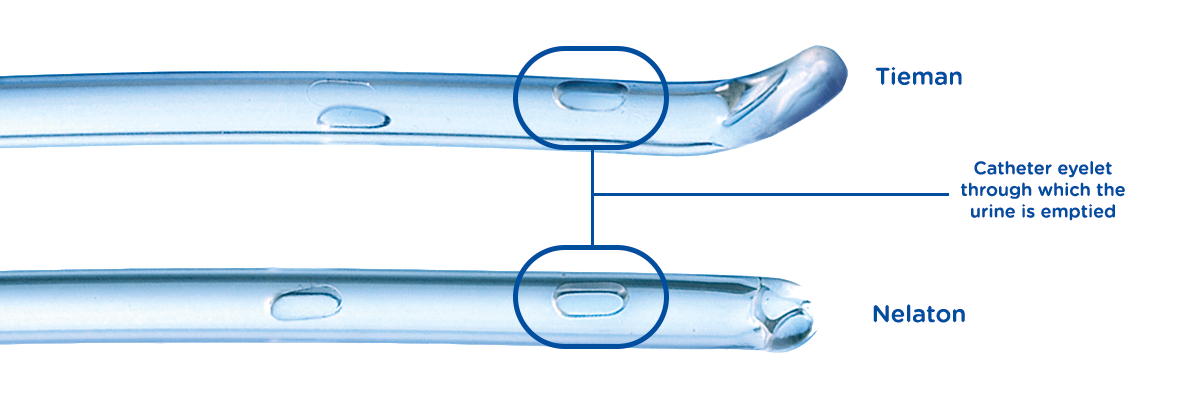
Catheter Coatings
Long-term intermittent catheterization requires frequent insertion and withdrawal of catheters, so it’s important that each catheter is sterile and lubricated to make self-catheterization safe and comfortable. For this purpose, intermittent catheters use an external lubricant or arrive pre-coated.
Coated Catheters
Most intermittent catheters will be pre-coated with a special lubricant to reduce the risk of urethral trauma and infection. These coatings are typically activated by immersing them in clean water or are pre-activated and can be used right away.
The most common coating is a hydrophilic coating which reduces friction making insertion and withdrawal easy. [viii] Hydrophilic catheters are considered the gold standard of catheterization as they have been proven to reduce the risk of urological complications including urinary tract infections [ix] and trauma (such as strictures and bleeding). [x] [xi]
Uncoated Catheters
Uncoated catheters require the application of separate gel lubrication to make insertion and withdrawal smoother.
You can learn more about the lengths, sizes, and tip options available in Wellspect's full range from our catalog, using the button below:
Catheters for Women

Many women with bladder problems will struggle for years without seeking medical help. Although intermittent self-catheterization can provide the solution, some women will face various barriers that can make learning and performing ISC more challenging. [xii]
A survey of continence nurses by Wellspect showed that as many as 1 in 5 women face psychological or physical issues when catheterizing, due in part to the female anatomy. [xiii]
However, it is possible to overcome most of these barriers. Commitment to learning and regularly performing the procedure is key to success. Equally important is choosing a catheter that fits your needs and lifestyle. Your healthcare professional can give you advice on both which catheter is right for you and how to get the best from the therapy.
Request free samples of LoFric Elle by clicking here
Steps for self-catheterization for women
When catheterizing you should always follow the training and advice provided by your healthcare professional. It is also important that you follow the Instructions for use provided with your specific product.
Below is a general outline of a catheterization procedure:
-
Hygiene is crucial. Always wash your hands with soap and water to reduce the risk of infections. During the procedure try not to touch the surface of the catheter.
-
Set up everything you may need and prepare the catheter following the directions on the package.
- Get in a comfortable position. Your healthcare professional should help you to identify a position that works for you.
- Locate the urethra, a thin passage that leads to the bladder. The opening is located above the vagina. It may be helpful to use a mirror and, if necessary, a lamp to pinpoint the exact location for insertion.
- Insert the catheter into the urethra slowly, trying as much as possible to stay relaxed. In case you encounter some minor difficulties, it may be appropriate to extract it slightly, take a deep breath to relax the muscles and try again. You will notice that the catheter has reached your bladder when urine begins to drain.
- When the urine has ceased flowing, you can begin to gently remove the catheter. During this phase it is possible that a small amount of urine may still come out: it is absolutely normal. Wait for the flow to stop and only at this point continue with the extraction of the catheter.
- Discard the catheter. Your pharmacy or home delivery service may be able to provide you with bags for hygienic disposal.
- Always take care of the cleanliness of the hands and the genital area. Once you have finished the procedure, always remember to wash your hands carefully and maintain regular intimate hygiene to avoid the risk of infections.
Wellspect's latest female catheter, LoFric Elle features an innovative L-shaped handle that improves control and hygiene. This makes it easy to learn to perform ISC and easy to use in the long run. Find out more using the button below
Catheters for Men

The reality is that sooner or later most men will experience some Lower Urinary Tract Symptoms (LUTS). This is the collective term for symptoms like nightly visits to the toilet, weak urinary flow, increased frequency, incontinence, dribbling, and problems related to sex.[xiv]
Yet despite being common, they are not often talked about and are often left untreated. Men are typically more reluctant than women to seek medical help, in part because of stereotypical perceptions of masculinity.[xv]
The good news is that these symptoms are often easily treatable. Intermittent self-catheterisation can be a solution for many Lower Urinary Tract symptoms and seeking treatment can have a great impact on your overall quality of life.
Request free samples of LoFric Origo by clicking here
Steps for self-catheterization for Men
When catheterizing you should always follow the training and advice provided by your healthcare professional. It is also important that you follow the Instructions for use provided with your specific product.
Below is a general outline of a catheterization procedure:
-
Wash your hands with soap and water and in any case, try to touch the surface of the catheter as little as possible.
-
Prepare the catheter for use by following package directions.
-
Choose a comfortable position, which is usually taught during training. Typically, catheterization is performed either standing or seated, while keeping the upper body in an upright position.
-
Hold the penis up towards the stomach to straighten the urethra.
-
Slowly insert the catheter into the urethra.
-
Men may have difficulty inserting the catheter due to the urethral sphincter muscles or the prostate. In this case, it may be helpful to withdraw the catheter a little and then try again with a couple of coughs or a deep breath to help the muscles relax.
-
As urine begins to drain, advance the catheter an additional inch or two and reposition the penis in its normal position
-
When the urine has finished flowing, gently withdraw the catheter. It is normal for a small amount of urine to come out during the extraction: when this happens, it is advisable to stop and wait for complete emptying.
-
Discard the catheter. Your pharmacy or home delivery service may be able to provide you with bags for hygienic disposal.
-
Wash your hands again.
The content of this post is for informational purposes only and is not intended for product promotion or diagnosis. For any further information, Wellspect strongly recommends that you consult your specialist for all questions relating to your health or to answer any questions.
